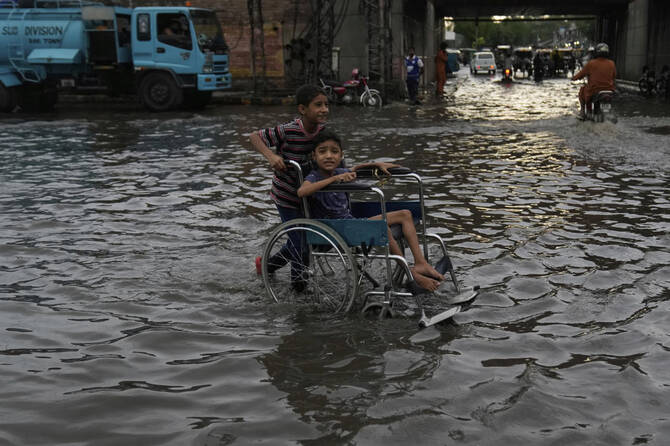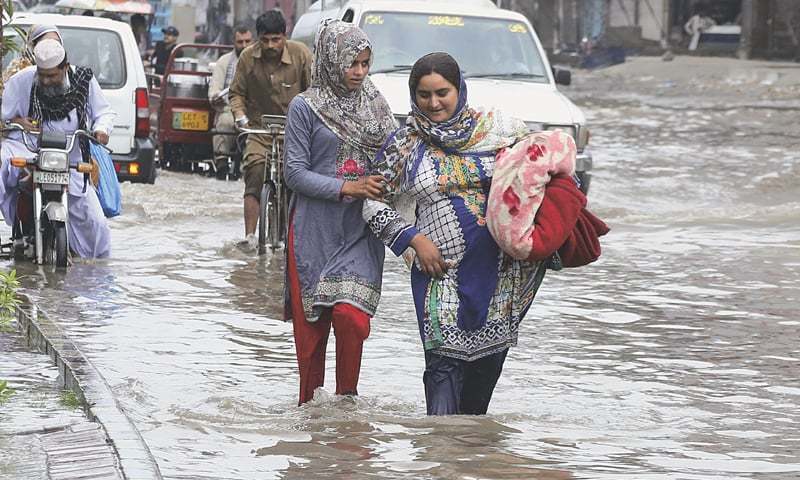A ferocious week-long bout of monsoon rains and sudden flash floods has left at least 46 people dead and many more injured across Pakistan, authorities confirmed on June 30, 2025. Heavy downpours, concentrated between June 24 and June 29, ravaged multiple provinces, triggering widespread devastation and emergency alerts.
Provincial Toll Breakdown
- Khyber Pakhtunkhwa (KP): 22 fatalities; bridges washed away, roads flooded, and rescues underway in Swat, Mansehra, and surrounding districts
- Punjab: 13 deaths, including 13 tourists swept from a family of 17 in Swat River – four others rescued
- Sindh: 7 fatalities, mainly from sudden inundation in rural districts
- Balochistan: 4 deaths, with remote areas cut off due to landslides
National Disaster Management Authority (NDMA) and provincial agencies reported the loss of lives and property, emphasizing that the rainfall has far exceeded usual seasonal levels—raising alarms about another repeat of the unprecedented 2022 floods.
Weather Warnings and Future Risks
The Pakistan Meteorological Department (PMD) had forewarned of above-normal monsoon activity, advising authorities to prepare flash flood risk areas in KP, Punjab, Sindh, and Balochistan. PMD officials cautioned that reservoir saturation and added water from melting glaciers could compound flood risks.
Experts warn that intensified climate-driven rainfall patterns may increase the frequency of such catastrophic weather events—placing urgent need on disaster preparedness and infrastructure resilience.
Humanitarian and Structural Impacts
- Infrastructure Damage: Washed-out roads and bridges have isolated rural communities, slowing aid delivery and interrupting schooling.
- Health Concerns: Floodwater contamination has sparked fears of water-borne diseases. Hospitals in affected regions are operating at full capacity with limited resources.
- Evacuations: Emergency rescue operations in KP and Punjab have displaced families, with temporary shelters providing basic relief.
- Tourism Sector Hit: Swat and Murree, popular tourist destinations, report stranded visitors and economic losses in agriculture and hospitality.

Government Response and Restrictions
Authorities have issued red-alert advisories across affected provinces, deploying National Disaster Response Force (NDRF) and army units for rescue operations. Temporary transport suspensions and banned hiking and rafting in flood-prone areas aim to prevent further casualties.
Media outlets report local leaders calling for proactive drainage mapping, early warning systems, and river embankment strengthening to counter future onslaughts.
Regional and Nationwide Alarms
With climate volatility increasing, analysts stress the need for:
- Strategic urban drainage upgrades in major cities like Islamabad, Rawalpindi, Lahore, and Karachi
- Community education campaigns on flash flood survival and water sanitization practices
- Monitoring of dam levels and reservoir capacity to manage downstream flow
- Integrated national flood response planning, with localized communication and funding systems
Moving Forward
Pakistan’s recent tragedies serve as a stark reminder of the urgent necessity to bolster disaster readiness through improved infrastructure, governance, and climate adaptation strategies. As the monsoon season progresses, officials insist on heightened preparedness and early action to avoid a rebuilding crisis reminiscent of 2022’s destruction.
#PakistanFloods #Monsoon2025 #FlashFloodWarning #ClimateResilience #DisasterResponse #NDMA #PMD #KPFloods #PunjabMonsoon #PakistanWeather

















